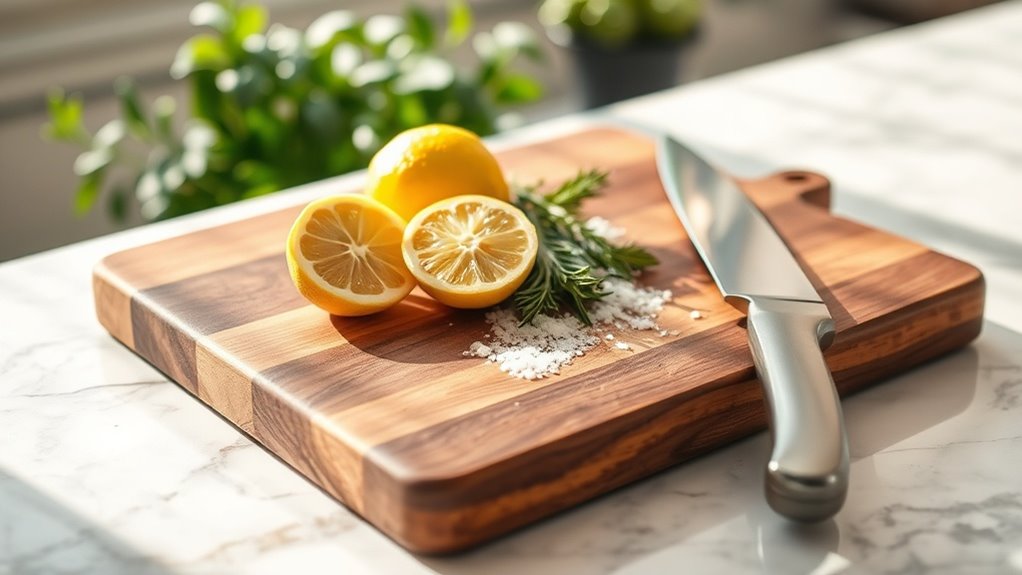How to Keep Your Cutting Boards Smelling Fresh
Like an artist caring for their canvas, maintaining your cutting boards requires attention and technique. You want to avoid lingering odors that can seep into your food and disrupt flavors. Thankfully, there are effective methods to keep your boards smelling fresh and inviting. Discover how simple practices and natural solutions can transform your cutting board maintenance routine into a straightforward process, ensuring your kitchen tools remain as pleasant as they are functional.
Choosing the Right Material for Your Cutting Board
When you’re selecting a cutting board, it’s essential to consider the material, as it can greatly affect both your cooking experience and the board’s longevity.
Fresh cutting boards come in various materials like wood, plastic, and bamboo.
Wood boards are durable and gentle on knives, while plastic boards are easy to clean.
Choose wisely to maintain freshness and protect your kitchen tools.
Regular Cleaning Techniques
Regularly cleaning your cutting boards is crucial for maintaining their freshness and preventing bacterial growth.
Start by washing them with warm soapy water right after use. Rinse thoroughly, and dry with a clean towel.
For wooden boards, apply mineral oil periodically to keep the surface conditioned.
Avoid soaking or placing them in the dishwasher, as this can damage their integrity.
Natural Deodorizing Methods
One effective way to keep your cutting boards fresh is by utilizing natural deodorizing methods. Here are three simple techniques:
-
Baking Soda: Sprinkle on the board, let it sit for 15 minutes, then scrub and rinse.
-
Lemon Juice: Rub a lemon half over the surface to neutralize odors.
-
Salt: Use coarse salt as a scrubbing agent to absorb smells while cleaning.
Proper Drying and Storage
Maintaining a fresh cutting board goes beyond just deodorizing; proper drying and storage play significant roles in its longevity and hygiene.
Always air dry your board upright to prevent moisture buildup, which can cause odors and bacteria.
Store it in a well-ventilated area, away from heat sources.
Avoid stacking heavy items on top, as this can warp the surface.
Maintaining With Oil and Conditioner
To keep your cutting board in top condition, applying food-safe mineral oil or a specialized conditioner is essential. Doing this regularly nourishes the wood, preventing cracking and odor retention.
Follow these steps for best results:
- Clean your board thoroughly before applying oil.
- Use a soft cloth to spread the oil evenly.
- Let it absorb for a few hours, then wipe off excess.
Avoiding Cross-Contamination
It’s crucial to be mindful of cross-contamination when using cutting boards, especially in a bustling kitchen.
To prevent this, dedicate separate boards for raw meats and vegetables. Always clean your boards thoroughly with hot, soapy water after each use.
For added safety, consider using boards made from different materials, like plastic for meats and wood for produce, to further minimize risks.

